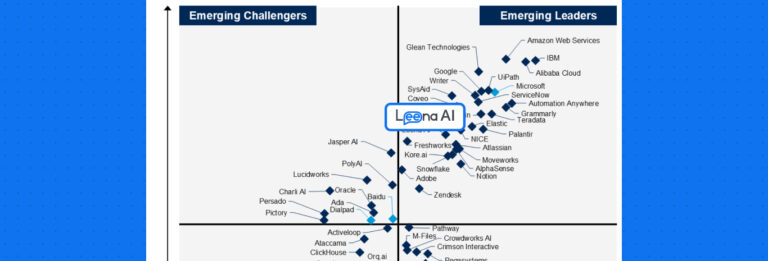As per a 2020 survey by Future Workplace, nearly 50% of the employees stated that employee experience was crucial for them. Improving employee experience is a highly personalized task. It is next to impossible to cater to it manually as the company grows in scale and vision. That’s where automation comes in.
Employee experience software with its various modules is a great way to address the repetitive and redundant tasks and queries, freeing up the HR’s bandwidth in the process. This helps the people in the HR department plan and strategize, while the software takes care of the execution and creates projections based on the data.
The need of the hour is to optimize automation to elevate the employee experience. In this blog, we will talk all about how HR tech can help you enhance employee experience.
What are the ways in which HR tech enhances employee experience?

Virtual recruitment
The year 2019 came with the ultimate disruption — COVID-19. This led to a rise in the culture of remote working and virtual recruitment.
The traditional hiring process was hassling and time-consuming, both for the recruiter and the candidate. Unlimited running around and submission of documents along with the multiple rounds of interviews made recruitment cumbersome.
Virtual recruitment, thus, came with its own set of perks. It removed the need for physical activities and put all the documents in one place for the candidates and the HRs. The remote hiring platforms sent out relevant notifications and reminders to the relevant stakeholders to keep everybody informed.
Virtual recruitment with the help of employee experience software is accurate and time-saving.
Remote onboarding
Employee onboarding is a repetitive process. Irrespective of the designation you hire for or the scale of your organization, the requirements and expectations are the same. Employee onboarding starts the day the employee accepts the offer and ends when they understand the organization’s culture, vision, and mission, along with the job requirements. Ideally, no matter the organization, the onboarding process happens during the tenure of probation.
Automation with the help of employee experience software that is equipped with an employee onboarding module helps the new employee focus more on work as it takes care of the entire process. From sending out welcome emails to scheduling team meetings and orientation and sending reminders for the same, and ensuring all the relevant documents are easily accessible and in one place, automation of employee onboarding is a smart move.
Document management
There is a lot of paperwork involved for the company when it comes to its employees. From the hiring process and basic background documents to the later updates, there is a lot of information. Physical storing of such documents is not only expensive but risky. Automating this aspect with the help of document management software ensures that the documents are secured and easily accessible.
Employee document management system comes with ample security and various access controls. It provides the facility of adding new hires’ documents easily and updating information for the existing ones with ease. Integration of employee documents from third-party software is another feature to look out for while choosing a good document management system.
Employee wellness
It is essential that an organization pays attention to the overall wellness of its employees. In today’s times of remote working, when social distancing is a norm and human contact is limited, employee wellbeing becomes even more important.
Automation with the help of employee experience software helps you analyze employee wellness and work towards making it better. This software helps create employee engagement surveys and work from home surveys with smart questions that assess the mental wellness of the employees. Not only this, the surveys use the data to give actionable insights related to employee performance and highlight the pain points. HR tech when used the right way, can actually help you take relevant steps in combating the deteriorating mental health of the employees by tackling the problem at its root.
Systemic training
HRs shortlist candidates and hire new employees after carefully assessing them on the basis of the job requirements and whether or not the person’s goals are in sync with the organization’s vision. However, even after being the perfect fit for the job, the hired person needs to be trained with respect to certain procedures and software. Doing it manually for each employee can be a tedious process.
HR Tech helps smarten up this process as well. Automation makes sure the training is continuous and without any gap, with online courses and relevant documents uploaded on the software for the new hire to access. This reduces the HR’s work by a mile who is only consulted when the new hire is stuck somewhere or is unable to understand certain instructions, instead of being involved in the entire training process.
Further, automation also makes the training consistent because it uses the same steps and modules for every employee. Another advantage of using HR Tech to provide systemic training to your employees is that it is not constricted by human limitations. The software can work 24/7 and train multiple employees at the same time.
Strategic upskilling
Stagnancy in the job is one of the main reasons for employee exit. Employees want comfort in their job but not at the cost of constant learning and growth. It is important to understand which employee wants additional help with respect to the same. Conducting surveys can help you gauge that better.
Employee experience software comes with various employee engagement surveys that can help you understand which employee is looking to upskill. The software then suggests various courses and you can devise employee development plans in the form of micro-courses accordingly. An upskilled employee is the one with a positive experience with the organization.
Performance management
Performance management software is a great way to make your people and performance management smarter. Work may have become convenient as it went remote, but it became scattered as well. Software to manage and track people and performances helps bring everything under one manageable umbrella.
Collaboration and productivity tools also help track performance and create reports that help in periodic assessments and subsequent appraisals. This smart automation rewards the right employees and encourages them to be more productive.
Continual feedback loops
It is important to create a feedback loop. This means that while it is important that the employees receive feedback for their performance and productivity, the management too should be receptive to the employee feedback.
Automation of the same is possible in the form of surveys that assess separate aspects of work. Employee engagement software helps you conduct frequent surveys addressed to the right set of employees to collect feedback that can then be immediately acted upon.
Smart case management
There are various queries that HR has to respond to every day. Whether the queries are unique or repetitive, the resolution process remains the same. That’s where automation smartens and quickens the entire procedure.
The best part about smart case management for HR is the existence of conversational AI that can tackle the most basic queries with ease. The employees get the easiest resolution from the virtual HR executive without having to connect with HR all the time. Moreover, the case management software forwards the unresolved queries to the right executive immediately.
These HR case management tools constantly update themselves on the basis of the data collected and create reports and analytics. Further, they protect all information of sensitive nature. And the presence of central dashboards makes it easy to track each employee’s case.
HR Knowledge management
There is a lot of information that the employees need at various points of their journey in an organization. They may have many questions that are relevant to their respective journeys as well. All this knowledge is known to HR teams but there are no knowledge hubs that can present information in the most accurate and presentable format immediately. That is only possible via the right tool.
That’s where automation comes in. The knowledge management module of employee experience software makes it possible for the employees to access all the relevant information in one place. The information is easily accessible via AI that picks the right answers from lengthy documents/policies and responds to employee queries immediately.
There are even added perks like having the option of multiple languages that put the employees under further ease while discussing particularly difficult queries. This knowledge base can be managed and updated the way you want and can be easily integrated with the employee workspace.
Compensation management
Each employee receives compensation along with reimbursements and bonuses, depending on the company policy. This task becomes heavier as the number of employees increases and the policies change. HR cannot spend time manually recording and disbursing each employee’s compensation. It is not practically possible. The best way to ease the process would be automating it and keeping a check on the factual functioning.
Employee experience software has compensation management modules. These modules help in recording all the relevant information at the time of hiring and also updating it easily when the need be, without requiring HR intervention. The employees can access simple information like their bank details, payslips and update it themselves, seeking help from HR if there is a need.
Expense management
Managing the employee expenses and reimbursing it can be challenging and tiring. This is even more of a task when the employees work remotely. Expense management automation can help ease the process a lot.
Simple inputs such as taking a picture of the bill and simply sending it or uploading it on the software should be enough to record the expense. The employee experience software can then initiate the reimbursement process. Further, it can also help file taxes in an accurate manner and create customizable, real-time reporting of all the expenses. It also integrates well with the accounting software you use.
Time tracking
This is perhaps one of the most common yet quite difficult tasks in an organization. Tracking the work hours of the employees is important and has to be done in a manner that does not tantamount to being micromanagement. That’s where automation of the task can make life easier for both the HR and the employees.
Employee experience software comes with time tracking modules that are equipped with reminders to punch in and punch out and also generate reports based on daily working hours. These not only help create timesheets and reports for individual employees but also can track billable client hours. This is especially helpful in remote working when the employees are not physically present and available at work.
Attendance management
Managing the attendance may have been a manual task for the longest time, but that’s not practical. Remote working has further increased the challenges of recording the presence and absence of various employees. Automation makes the process easier.
Employee experience software with an attendance management module makes the tracking quite easy with the help of options to approve or reject leaves, across levels of management. It can also be integrated with various connecting platforms such as Slack, Microsoft Teams, etc.
Attendance Management also makes life easier for the employees who do not have to send emails for leaves and can simply apply for the same via the app. Further, at the time of calculating salaries, each employee’s monthly dashboard and reports can give the information on attendance, rather than the HR manually fishing through the mails for the same. Automation makes attendance management easier, for better.
Shift planning
Just like attendance management and time tracking are no longer manually-feasible options, shift planning too can benefit a lot from automation, instead of creating manual emails and reminders for the same. Particularly in organizations that do have a shift planning system instead of regular fixed working hours, it becomes cumbersome to create multiple shifts, ensure the communication is made, and record the same.
Shift planning modules are a good way to automate and ease the process. These come with conversational calendars instead of conventional ones, where information of various and upcoming shifts is accessible. It also has various notifications and reminders so that no employee misses their respective shift. Streamlined communication and dashboard help manage the full-time, part-time, and other employees on one platform.
Diversity enhancement
This is the 21st century. The workforce is now multigenerational, multicultural, multi-lingual, etc. Diversity and inclusion are no longer optional. It is a mandate if you wish to grow as an organization. Taking care of this multi-ethnicity and multicultural employee populace is not easy and definitely not the task of a few HR managers. That’s where you need automation to make life easier and data more accurate.
Employee experience software uses engagement surveys to understand the impact of diversity, and conversational AI helps in implementing the same in different languages. Further, the AI adapts its tone depending on the employee it is talking to, making the experience truly dynamic. The software also helps onboard employees onto various support groups, and build a more empathetic and inclusive workforce.
Work Culture
A company’s culture and how it impacts the employees, their performance and productivity, is extremely important. Culture is also important if you wish to attract the right kind of talent and build an extraordinary workforce. If your company does not have a good culture, it will lead to an increased attrition rate and a lower hiring rate which will further deteriorate the company image.
Automation with the help of employee engagement software can help tackle this and manage company culture as well. They have everything with respect to creating a good and just company culture, from assessments to planning strategies. It also helps measure, monitor, and improve different aspects and metrics.
Smarten up your HR policies with tech and automation

AI and technology have transformed our lives for good. They can also bring about a change in how you shape your employee experience and the way your organization works. They ease the HR department’s job and also make information more accessible for the employees, enhancing their experience.
The time to start investing in automation is now. Wondering how and where? Start now







4 Comments